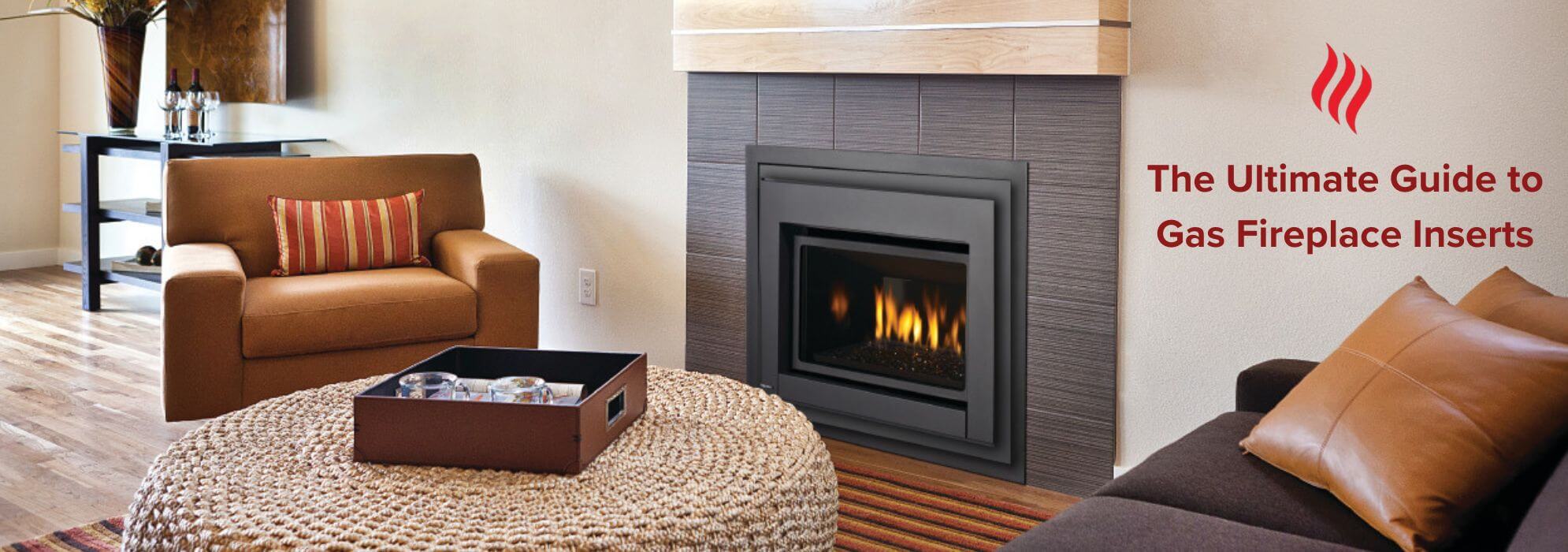
If you're looking for a convenient, energy-efficient way to bring warmth and ambiance to your home, gas fireplace inserts are an excellent option. Whether you’re upgrading an old wood-burning fireplace or looking for a low-maintenance heating solution, this guide will walk you through everything you need to know—including types, benefits, and how to choose the right one for your space.
What Are Gas Fireplace Inserts?
Gas fireplace inserts are self-contained units designed to fit into existing masonry or prefab fireplaces. They transform inefficient, drafty fireplaces into high-efficiency gas heating appliances. These sealed systems typically include a firebox and a glass front, keeping combustion air and exhaust separate from your home’s indoor air.
Unlike traditional fireplaces, gas inserts offer controlled heating and consistent flame performance with the push of a button. Whether you opt for a natural gas fireplace insert or a propane fireplace insert, both options provide reliable warmth without the mess and hassle of wood.
Did You Know: Most Regency gas inserts can operate on Natural Gas or Propane, a simple conversion kit is all that is needed!
Why Homeowners Choose Gas Fireplace Inserts
Gas fireplace inserts have become increasingly popular, especially in colder climates like Canada & the northern and eastern United States. Here’s why:
- High Efficiency: Inserts can reach efficiency ratings of up to 85%, turning more fuel into usable heat.
- Clean Operation: No ash, creosote, or wood storage required.
- Low Maintenance: Annual servicing keeps them in top condition.
- Ease of Use: Operate via remote control, wall switch, or even smart home systems.
- Environmentally Friendly: Gas burns cleaner than wood, producing fewer emissions.
Demand for gas fireplace inserts North America-wide continues to grow due to their cold-weather performance and compatibility with local fuel sources.
Types of Gas Fireplace Inserts
Choosing the right insert depends on your home’s construction, your heating goals, and applicable building codes. The two most common types include:
1. Direct Vent Gas Fireplace Insert
A direct vent gas fireplace insert draws combustion air from outside and expels exhaust through a dedicated vent. This sealed system maximizes efficiency and maintains indoor air quality. It's the most popular and recommended type for residential use.
2. Natural Vent (B-Vent) Gas Fireplace Insert
A natural vented or b-vented gas fireplace insert draws combustion air from inside the home, but exhausts directly outside the home. These are less efficient than direct vent models, but can still provide effective supplemental heating. These gas fireplace inserts have simpler venting and were a popular choice in older, multi-residential buildings due to their smaller vent footprint requirements. As B-vent appliances draw air from within the room, negative pressure can be problematic. Negative pressure scenarios occur when tightly sealed homes do not allow for adequate makeup air to enter the room as air is being drawn out through the fireplace (or other exhaust fans, such as in the kitchen & bathroom, direct air outside the home).
Natural Gas vs. Propane Fireplace Inserts
Your choice of fuel will usually depend on availability in your area:
- Natural Gas Fireplace Insert: Best suited for homes connected to a gas utility line. It's cost-effective and offers uninterrupted service.
- Propane Fireplace Insert: Ideal for off-grid or rural homes. Propane delivers comparable performance and is stored in refillable tanks.
Both options offer consistent flame visuals, efficient heating, and easy control.
How to Choose the Right Insert
To find the perfect insert, consider the following:
- Size & Fit: Measure your existing fireplace opening. Inserts come in multiple sizes to ensure a secure fit.
- Heat Output: Choose a model with the right BTU rating for your space.
- Design Preferences: Select from traditional log sets, contemporary glass or stone media, and a variety of trim options.
- Control Features: Look for options like remote control, wall thermostat, or Wi-Fi connectivity.
Installation & Maintenance
Professional installation is required for safety, efficiency, and code compliance. A certified technician will handle everything from gas line connection to venting setup.
Maintenance is simple but essential. Schedule annual inspections to clean burners, check seals, and verify safe operation. Periodically clean the glass and replace remote batteries as needed.
Why Choose Regency Gas Fireplace Inserts
Regency is a trusted name in the fireplace industry, known for quality craftsmanship, stylish design, and exceptional performance. Whether you’re drawn to a modern, streamlined look or a more traditional aesthetic, Regency offers a variety of gas fireplace inserts to suit your home.
With both natural gas and propane fireplace insert models available—and options for direct vent and vented gas fireplace insert systems—Regency makes it easy to find the right fit. All units are rigorously tested, certified for safety, and backed by industry-leading warranties.
For homeowners exploring gas fireplace inserts in Canada or gas fireplace inserts in the US, Regency provides full dealer support nationwide to ensure professional installation and ongoing service.
Final Thoughts
Upgrading your fireplace with a gas insert is one of the best ways to enhance comfort, lower heating costs, and elevate your home’s ambiance. Whether you’re interested in a vented gas fireplace insert for a classic setup or a ventless gas fireplace insert for installation flexibility, there’s a solution to meet your needs.
Explore Regency’s complete line of gas fireplace inserts or contact your local dealer to discover how easy it is to transform your fireplace into a powerful and stylish heat source. Warmth, elegance, and convenience are just a flame away.